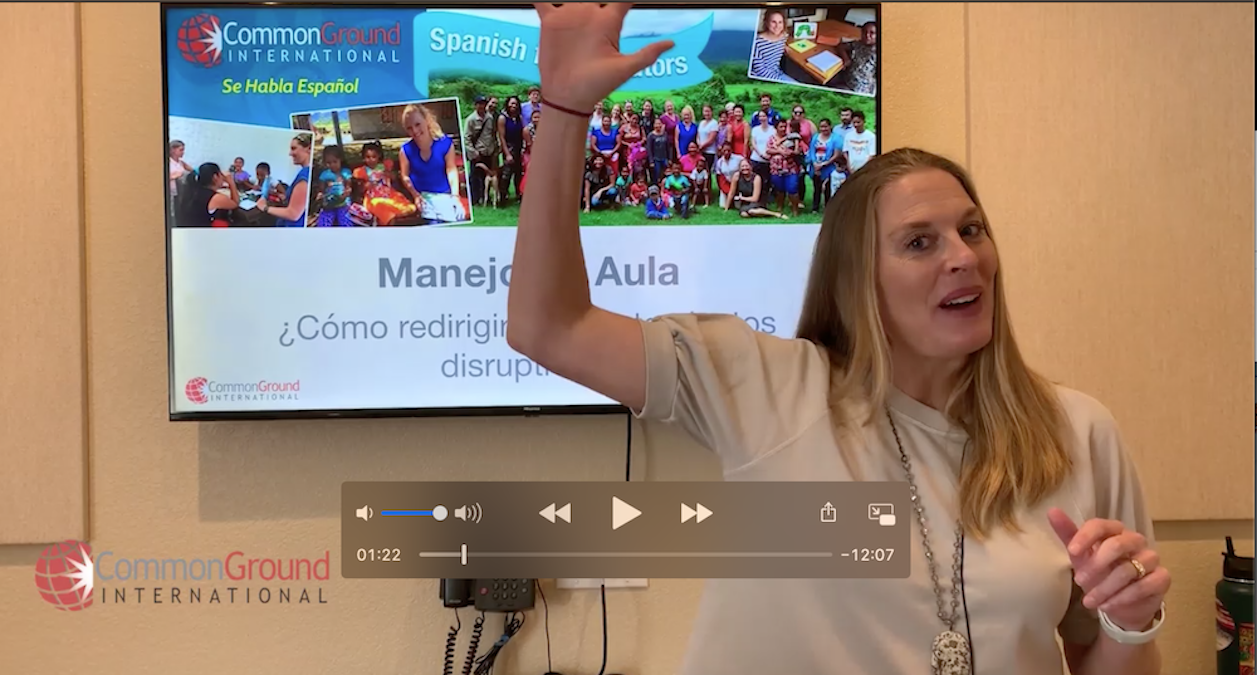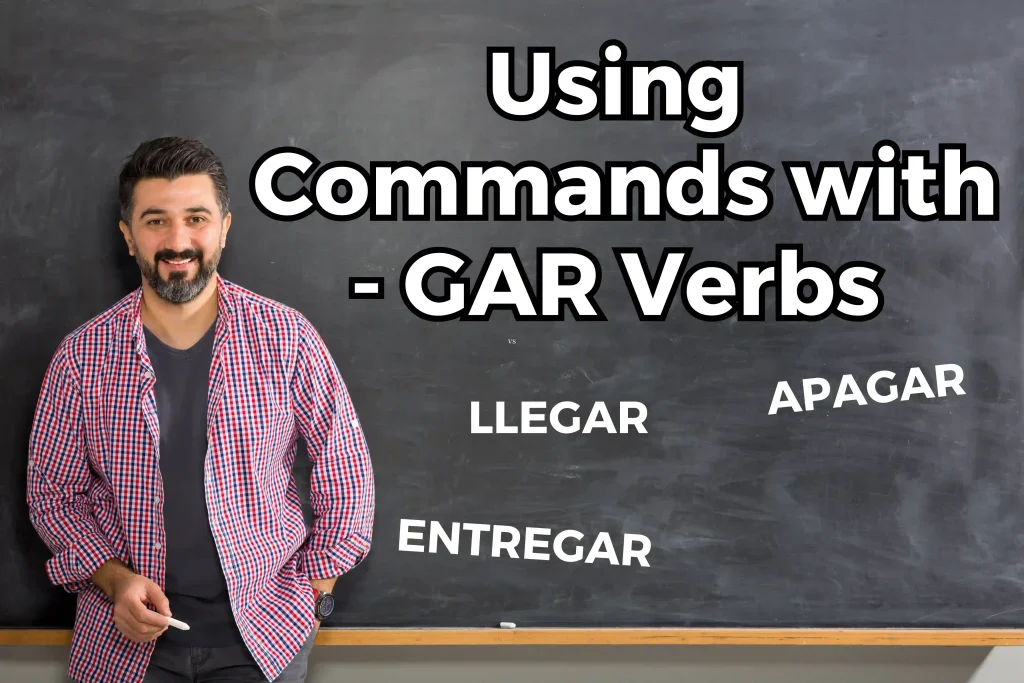In this Spanish for Educators lesson, you will learn how to form “lenguaje redirectivo” to implement positive redirection en español.
This is the first lesson of a new series called “Manejo de aula” (Classroom Management). This Manejo de aula series focuses the Spanish you need in order to manage behavior, rules, expectations, etc. in and out of your classroom.
The objective of this lesson is learning how to redirect disruptive behaviors in your classroom using “lenguaje redirectivo”; but before starting with this lesson, please be sure to check out these lessons:
- How to talk about positive and negative behaviors in Spanish
- How to talk about classroom expectations in Spanish
Here is the Redirective Language in Spanish lesson that I taught on YouTube and to our Facebook group:
Subscribe to our YouTube Channel to see all of our lessons and get the latest videos right away!
Lenguaje redirectivo – Redirective Language
El lenguaje no verbal – Non-Verbal Language
El lenguaje no verbal es PODEROSO. Sometimes you don’t need to use any word to redirect behaviors; what you need is a powerful non-verbal communication.
Some good examples of non-verbal language are:
- Acercarse al estudiante: Get closer to your student so they change their attitude/behavior.
- Mantener el contacto visual: Maintain eye contact with your students.
- Un toque en el escritorio, hombro, etc.: tapping their desk or even their shoulder can totally change a student’s behavior.
- Movimientos de la cabeza: Little head nods are also helpful in this case.
What are you non-verbal language tricks to get disruptive behaviors redirected in your classroom? Share them in the comments below 🙂
Now let’s see a student profile…
¿Cómo se porta Samuel? – How Does Samuel Behave?
Él / He…
| Spanish | English |
| Copia la tarea o el trabajo de otros estudiantes | Copies the work from other students |
| No presta atención | Does not pay attention |
| No pide permiso para salir de la clase | Does not ask for permission to leave the class |
| Se rehúsa a completar el trabajo / la tarea | Refuses to complete the work |
| No respeta la propiedad de otros | Does not respect property of others |
| Tiene crisis emocionales: grita, llora, arroja objetos | Has Pfizer tantrums: he yells, cries, trows objects |
These are some examples of negative behaviors you might want to redirect in your classroom. Let’s dive into the Spanish you need to address this situation and improve your student’s behavior.
Redirecciones verbales – Verbal Redirections
There are some grammatical patterns you can start using to redirect the students’ behavior. Don’t worry! You don’t need to know all the grammar rules to use these expressions, just memorize them! 🙂
PATRONES que pueden usar…
- Necesito que tú + Subjuntivo: I need you to…
- Favor de + verbo infinitivo: Please… (do this)
- Vamos a enfocarnos en + Infinitivo (collective voice): We are going to focus on…
- No es apropiado + infinitivo: It’s not appropriate to…
- Presta atención (commands): Pay attention! (Plural: Presten atención).
- Puedes escoger ____ o ____ (dando opciones): You can choose between ____ or ___.
- La expectativa es (Restating Expectations): The expectation is…
1. Necesito que tú + Subjuntivo
This pattern requires a subjunctive, but you don’t need to know the subjuctive in order to start using it; just need to memorize them 🙂
Necesito que tú… – I need you to…
| Spanish | English |
| Llegues a tiempo | Arrive on time |
| Obedezcas las reglas | Obey the rules |
| Levantes la mano | Raise your hand |
| Participes en la clase | Participate in class |
| Respetes la propiedad de la escuela | Respect the school personal property |
| Seas responsable | be responsible |
| Utilices las palabras mágicas (de cortesía) | Use the magic (courtesy) words |
2. Favor de…
You need to use an infinitive verb with this pattern. This is the equivalent of asking “Please_____”
Favor de… – Please…
| Spanish | English |
| Escuchar cuando otros hablan | Listen to others when they speak |
| Utilizar los buenos hábitos de estudio / trabajo | Use your good work habits / skills |
| Ayudar a los otros | Help others |
| Entregar a tiempo su tarea | Turn in your homework on time |
| Estar listo/a para aprender | Be ready to learn |
| Trabajar duro y eficazmente | Work hard and efficiently |
3. La voz colectiva
The collective voice pattern uses the verb Ir + a + infinitivo (to go to + infinitive) in the first person of the plural.
Vamos a… – We are going to…
| Spanish | English |
| llegar a tiempo | arrive on time |
| obedecer las reglas | obey the rules |
| levantar la mano | raise our hands |
| participar en la clase | participate in class |
| respetar la propiedad de la escuela | respect the school personal property |
| utilizar las palabras mágicas | use the magic words |
| prestar atención | pay attention |
| escuchar cuando otros hablan | Listen to others when they speak |
4. Mandatos
The commands can be used for all the class, so here are some examples with the plural command “ustedes”:
- Saquen los libros, portapapeles, carpetas: Take out your books / clipboards / folders
- Abran los libros, las novelas, los cuadernos en la página __: Open books, novels, notebooks to page __
- Levántense: Get up
- Siéntense: Sit down
- Miren la pizarra: Look at the board
- Presten atención: Pay attention
We want to know…Comment below–>What are your thoughts about this topic. Let us know in English or Spanish in the comment section below!
¡Te toca a tí!
Your action steps:
- When considering these topics, what vocab. phrases do you specifically need to know?
- Subscribe to our YouTube Channel
- Carve out an hour each week to watch the lesson and study
- Interact – We want your feedback…What was helpful? Comment in this FB group, on my blog, or on YouTube videos
Now it’s your turn! I packaged all of this vocabulary in Spanish into some flashcards for you to study.
Download the lesson notes and start creating your own sentences using this new vocabulary in Spanish and share them on the comments below or in our Facebook group to receive feedback from other Spanish learners 🙂





